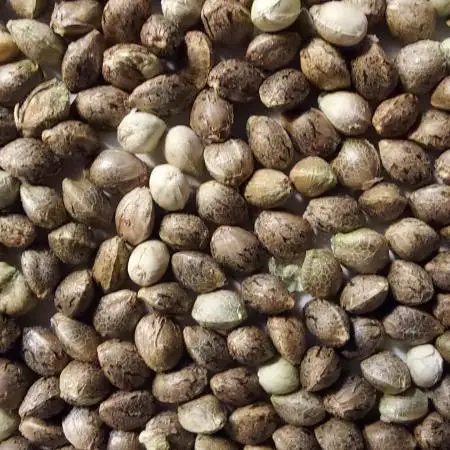The Grow Awards 2026 🏆 























Which one to choose guys?? Viparspectra p2000 2024 model? Or the Jackson nemesis 250 by grow the jungle??
Erebussstarted grow question 1y ago
Which one to choose guys?? Viparspectra p2000 2024 model? Or the Jackson nemesis 250 by grow the jungle??
Open
Setup. Lighting
likes
Answer
Spike-GreenGroweranswered grow question 1y ago
Personally I would search for a light with Samsung LM301H diodes. You get better bang for your buck.
But between these two, I think I would choose for the Viparspectra.
likes
Complain
GardenOfEden88answered grow question 1y ago
Which One Should You Choose?
For Smaller Spaces (2x2 ft or 3x3 ft): If you're working with a smaller grow tent and want a cost-effective, energy-efficient option, the Viparspectra P2000 is a solid choice. It will provide great light coverage for a 3x3 ft flowering area and is generally easier on the wallet.
For Larger Spaces or More Intensity (3x3 ft or 4x4 ft): If you have a larger tent or want a more powerful light that provides advanced features like dimming and a customizable spectrum, the Jackson Nemesis 250 is worth considering. It's more suitable for larger grow areas and would give you more control over your grow environment, but be prepared to spend more upfront.
Ultimately, your decision depends on the size of your grow tent, your budget, and the features you value most in a grow light.
likes
Complain
BlazingBudanswered grow question 1y ago
Viparspectra for sure, its the better light. 💚
likes
Complain
00110001001001111Oanswered grow question 1y ago
"any lm301 run .2 watts per diode will die faster than advertised. " -- left an important word out.
Any lm301 run hotter than .2 watts per diode will die faster than advertised."
likes
Complain
00110001001001111Oanswered grow question 1y ago
jackson nemesis 250w 560 umol/s PAR... they are lying about efficacy. It is not 2.6 umol/J. It is only 2.24 umol/J of par so it's a low-end efficacy light. As long as it is very cheap this is okay. At 250w it won't generat too much heat for a small room with a tent in it. It won't last the advertised 50k hours of use before it dims to90% of original intensity. it will dim faster due to lower efficacy / higher heat / more watts per diode than the manufacturer tests the diodes and for which that 50k hours metric is based upon.
Looks like it is a quantum board or something similar? Also, less than ideal, but the comparison is also a QB so it's a wash in this regard.
given the diode count this doesn't make sense... maybe they are just bad at properly measuring their own light? Seems to have a decent diode count and should be higher efficacy.
P2000 - can't find information i trust about umol/s and efficacy.
the key to any samsung lm301-based led grow light is running them as close to how samsung tests them as possible. Otherwise, you get less longevity, more heat, and higher bills to produce the same amount of light per day.
Anything over .20watts/diode is running that diode hotter than samsung.com spec sheets - these are the spec sheets that matter as many, many led grow light manufacturers lie through their fucking teeth, but it's easy to spot check them for honesty.
The fact that viparspectra is not advertising number of diodes, i'd wager the jackson nemesis is using a better ratio. As long as price isn't too significantly different, i'd always go with the fixture that is running at a lower wattage per diode - this assumes equivalent heat sinks and diode distribution etc.
any lm301 run .2 watts per diode will die faster than advertised. .2-.25w/diode will be the 2.7-2.9umol/J tier. Binning of diode will be cause for some stratification of ~10% range. the mid teir will be around .3-.4 watts per diode -- with these you often won't get the best binning ("SK" diodes in 3000k,for example vs "SJ" - can see model number variations), but if you did, you'd still be up near 2.8-2.9 umol/J efficacy, but they'd still be run hotter and dim faster. Then i wouldn't buy any light higher than .4-.5watts per diode. these are lumps of shit. I won't specifically state where that line should be drawn but somehwere around there -- efficacy falls off faster and faster the further from .2watts per diode.
You pay for efficacy. It is directly realted to longevity and electricity costs. Don't get caught up in gimmicks like UV diodes... those are a waste of time to run all the time and 2x as useless and stupid to run uv in vege phase. If a light has them, no big deal, but don't buy a light for that reason. The far red diodes are good to have. If it focuses on "ePAR" that's worthwhile to value, but nothing to overpay for.
Better to teach a person to fish than just to hand them some fish.
The othr thing to know -- this is mostly about electrity and heat produced. If you give 35 DLI with either light, you'll have similar results assuming any environmental differences caused by the variations between the lights is mitigated properly. Don't worry about quality. If it produces 35-40 DLI for your area and ambient co2 conditions, yield and quality will be equivalent, all other factors remaining the same. you'll want stronger lights if you add co2.
likes
Complain
modmyplantsanswered grow question 1y ago
Viparspectra for sure. You maybe also check the KS-series if you dont have other lamps, if you wanna stay at that budget i would also check the xs2000, its a newer model.
I would buy on amazon, but if you wanna buy at viparspectra website you can use my code: MMP.
likes
Complain
Bandit600answered grow question 1y ago
Hi Ich habe seit 2,5 Jahren die P2000 und bin sehr zufrieden mit den Ergebnissen egal ob Autos oder Photos. Die andere Marke sagt mir nichts. P2000 kaufen und Grow starten 😊.
likes
Complain
Cameltoeanswered grow question 1y ago
I have nothing but good things to say about Viparspectra. I use a p1000 to test out genetics and it works great. I will leave a link to a test grow I did. You can see what type of buds it produced. Buds were nice,tight and frosty. I have never used the other light you're asking about.
growdiaries.com/diaries/226213-purple-shot-grow-journal-by-cameltoe/week/1342339
likes
Complain
m0useanswered grow question 1y ago
I don't like UV in the main light, UV didoes die out much faster and just create a extra hazard in indoor grows for yourself/eyes. I don't think this would be an issue, but if they are wired weird and one of the UV leds goes out, does it take out other functioning LED's or will the one just stop working? as they will 100% die off before the other spectrium LED's do.
Their is a guy on youtube who does lighting reviews. migro, I like how he does things. not a lot of bull shit.
www.youtube.com/watch
www.youtube.com/watch
Now they may not be the current models but should give yea some insight onto it.
The viper one has some detailed reports on how the light performs and I don't see that with the Jackson one... their entire webpage looks like a ed hardy jacket and I think that's what they are mainly selling. the logo. Would not trust any of them to advertise the correct umol/j rating on their page all light manufactures lie.
Overall I'd lean towards Viper but do the work for yourself and look into it.
1 like
Complain
420Germanyanswered grow question 1y ago
I would choose the Viparspectra.
But make sure to check the Chinese competitors, takes a while to get them, but they cheap and the chips are made in Taiwan aways no matter what lamp (at least if it should be top notch).
likes
Complain
Ninjabudsanswered grow question 1y ago
Stay away from viper spectra the spectrum on their lights is not the greatest. Very little blue light so it won’t do seedlings or veg very well at all also. I had the 2x2 version from them awhile ago and my plants just didn’t grow well under them.
Either go with
Mars hydro
Spider farmer
Medicgrow
Definitely the best for the buck without sacrificing grow quality like there is definitely way better lights that are expensive af like
Black dog grow lights
Fohse grow lights
likes
Complain
Ninjabudsanswered grow question 1y ago
Are looking for a good 2x4 grow light? Let me give you a suggestion you probably have not seen. Look up the medicgrow mini sun 2 inch the 500w version. By far the strongest light per sq feet on the market you can get 1000ppfd evenly across 2x4 grow space. Anything between 40in from the light to 24on from the light the light has almost a perfect spread across 2x4 area litterly every corner gets the same amount of light as the center the tent
likes
Complain
Similar Grow Questions
Solved

nectarinepasta
Leaves drooping after switching from MH to HPS light for flowering. Is this expected?Flowering started on auto, switched light from MH to HPS 4 days ago. Same power, same ballast, different bulb vendor:
- 150W MH from Superplant at 5000 K
- 150W HPS MASTER SON-T APIA Plus from Philips at 1950 K
Flowering continues but leaves started to droop, plant looks sad
Week 6
Setup. Lighting
5y ago
1
2
Solved

BullWeedDog
Que tiempo tengo que dejar mi ventilar encendido??Puedo utilizar el ventilador de mi cultivo solo cuando este encendida la bombilla?? es decir colocar que se prenda y se apague junto con la bombilla en el mismo ciclo o siempre debe estar encendido??Other. General questions
Setup. Lighting
Setup. Ventilation
4y ago
1
1
Solved

Swvacountryboy
Led Grow lightsI have a viperspectra xs4000 light 480 watts I am running it at around 25% on the dimmer switch and my lights are about 24" from my canopy. I've noticed some of my pistols wilting and looking stressed. Should I try to move my lights higher or continue dimming them down more?Week 8
Setup. Lighting
4y ago
1
Solved

NarcissisticEcho
Light intensity? Should I dim?I'm having a light-science question.
I have 5 bulbs, 11w each, total 55w. I know this is not much but anyway. Should I dim the lights for seedlings even If I have this low setup?
I mean, does light intensity affects seedlings' health? Or 55w can work on a maximum level?Other. General questions
Plant. Too short
Setup. Lighting
4y ago
2
2
Solved

newbieeeeem7
LED distance in grow 80x80x160I placed the LED at a distance of 45-50cm from the seeds
and consequently it was about 65-70cm from the larger plant.
I have 4 plants
Is it ok like this?
I don't have a luxmeter and I use the phototone app to get an idea of the PPFD in each plant.
LED QB 120w, LM301H
Setup. Lighting
3y ago
1
2
Solved

connormcleod47
What is the optimal uMOL/DLI for autoflowers during the flowering cycle without CO2 on a 20/4 schedule?Setup. Lighting
1y ago
3
3
Solved

Mr_Motalovah
NEED ADVICE Which one is best for 4x4 tent? Down to these models, if theres another model that's good and same price range, let me know. Thanks in advI've basically been researching for the past 24 hours.
I've gotten some REALLY GOOD advice from @Nobody01 and @ActioPauliana
Mars Hydro TSW2000 or TS 3000
Easy Grow s600 v2 or s800 v2 (anyone using or used this model?)
Vipra Spectra P2500
Any growers that use these, I'm all ears.Setup. Lighting
6y ago
5
6
Solved

Mikeinthekeys
How can I prevent these light burn issues?It seems these Mars hydro lights are not so great. This is my third grow and having the same issue every time. Red stems where they are exposed to light. Yellowing leaves. But when I move the lights further away, stretching is very bad. Should I just get new light?Setup. Lighting
4y ago
2
8
Solved

iiswiftt
Auto Light CycleCan you switch an autoflower to 24/0 during flower?
Week 8
Setup. Lighting
5y ago
3
5
Solved

Jeffrokush
New light ! Migro Aray 4 ! Lol I’m Still a noob.Actually I need to change my info , I got a newer light ! Migro aray 4 but my question was what distance away or better yet what par range should I be using when in veg ? I have the toy gauge in the pot saying the lights intensity is at 850-900 par…
Week 6
Setup. Lighting
5y ago
1
3
Solved

ganjermaster
Could be this yellowing on newer leaves a light deficency problem?I'm using a Mars Hydro TSW2000 distance 95cm to the mother plant, 140cm to seedlings and power 55%.. testing with phone app Light Meter I'm getting around 8000 lux in mother and 6500 lux in seedling.. I've raised it to 70% power and now getting around 11000/8000 lux mother/seed
Leaves. Color - Yellow
Setup. Lighting
4y ago
1
4
Solved

Blueboy2019
5 hr power cut in flowerThis morning my lights come on as they should but then I had a power cut for 5 hrs after the light been on for 1 hr in the morning. I'm 2 weeks into flower on a 12/12 ... What should I do? Start a fresh 12/ hrs so change up my timer or just leave them as their are??Setup. Lighting
6y ago
3
Solved

Anna_J
Swapping day/night light cycle during flowerDay 22 of flower. Lights are on during the day, 8am-to-8pm but we need to switch to 8pm-to-8am to use the colder night air to cool our lights without using a/c. Would it negatively affect the plants at this point in flower to give them 24hrs dark & completely swap light cycle?
Buds. Other
Setup. Lighting
5y ago
3
2
Solved

Screwie
Different light for flowering stage?Second time grower and first time blogger. Have yet to post yet but i'm getting prepared before receiving seeds in a couple of days. My question is, is it advisable to get a different watt light 4 the flowering stage? I have a Mars Hydro 300W light and a Q60 Homebox Ambient tent.Setup. Lighting
5y ago
2
2
Solved

Dillsnills
Opinions on how these 2 r looking and any advice on going forward is greatly appreciated.I've read mixed things on when a plant looks like it's praying, some say sign of light or heat stress others say it's a sign ur plant is happy.Opinions on how these 2 r looking? Day 9,temp74-75 day, 70-71nght,57rh, ViparSpectra p2000 at 23inches at 40%, Glueberry Og Auto.
Setup. Strain - Autoflowering
Setup. Lighting
Setup. Seedling
5y ago
3
3
Solved

GEESTGROW
How to dim a Sansi LED bulbI have a 10W Sansi LED bulb for my grow, but I would like to be able to dim the light since, having limited space and needing to place it close to the plant, I'm having issues. (https://www.amazon.es/SANSI-Bombilla-Espectro-Completo-Invernadero/dp/B08P1RL7KC/ref=asc_df_B082PSBP68
Setup. Lighting
9mo ago
6
7






















